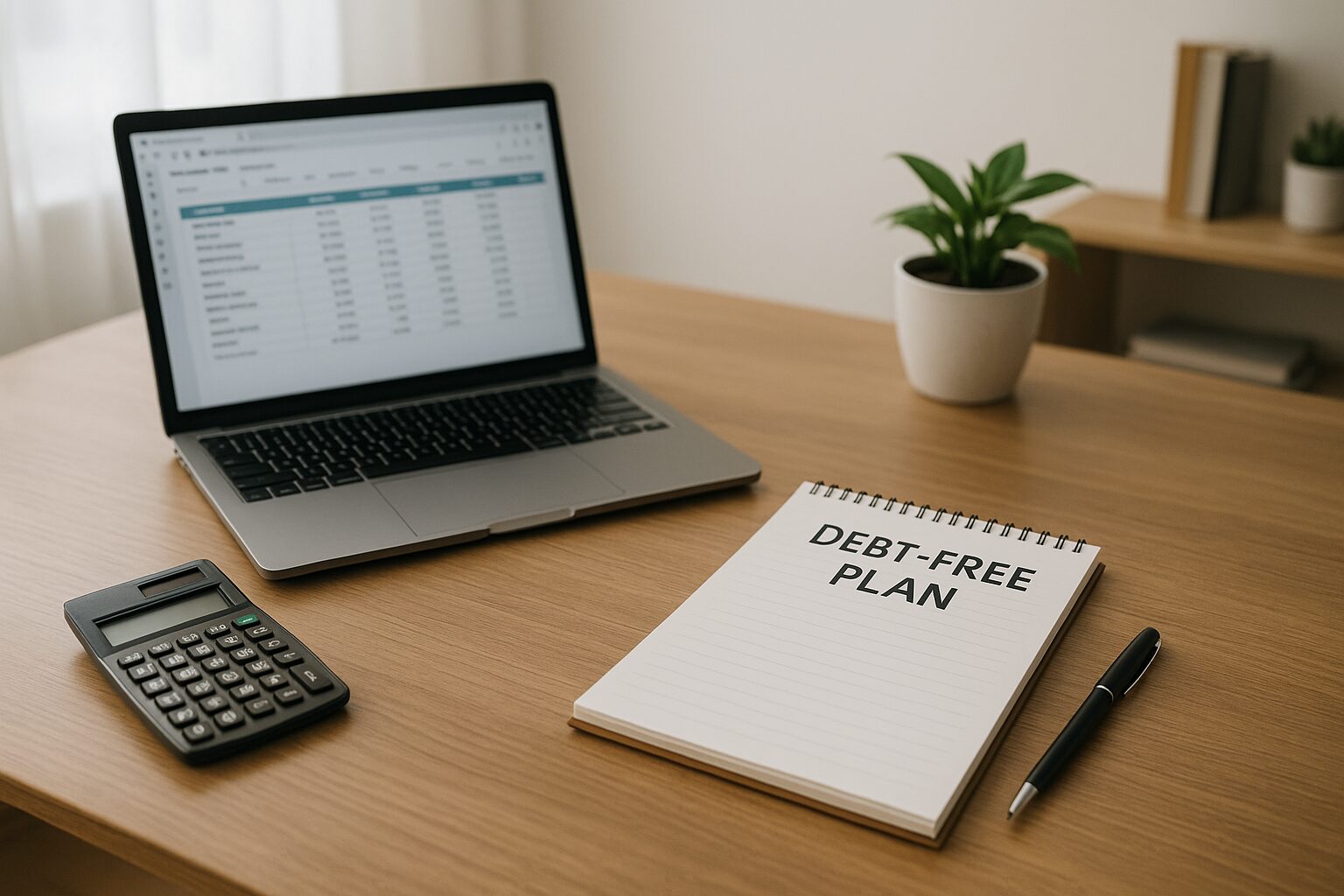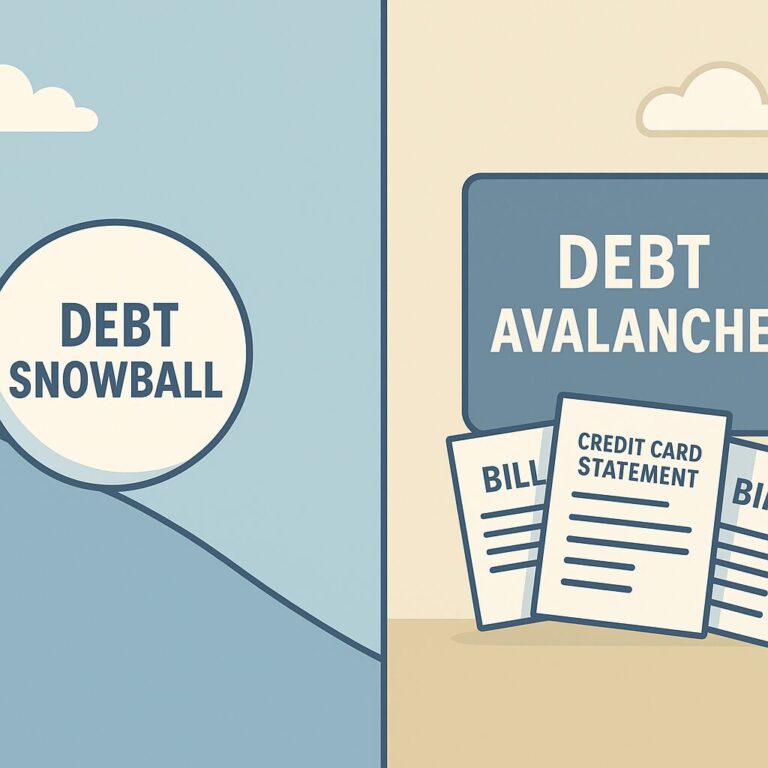The Complete Guide to Getting Out of Debt and Staying Out
Most people don’t plan to fall into debt. It starts small with a credit card balance, a car loan, or a medical bill. But left unchecked, debt grows into a weight that crushes financial progress. Instead of building wealth, you’re sending hundreds (or thousands) of dollars every month to lenders in the form of interest payments.
The good news? You can break free. Getting out of debt isn’t just about math; it’s about mindset, systems, and lifestyle alignment. This guide will walk you through practical steps to pay off debt, build habits that keep you debt-free, and finally start putting your money to work for you.
Why Debt Freedom Matters
Debt is more than numbers on a statement. It impacts your stress, your relationships, and even your health. When you’re buried under debt:
- Every emergency feels bigger.
- Every paycheck feels smaller.
- Every financial goal feels out of reach.
On the flip side, debt freedom creates margin in your life. With fewer obligations, you can:
- Save for emergencies without fear.
- Invest for the future instead of sending money to lenders.
- Make choices based on values, not desperation.
Related read: How to Align Your Lifestyle With Your Financial Goals — aligning lifestyle with debt payoff builds lasting freedom.
I’m going to lay out the system I’ve used for getting rid of debt. All you have to do is follow the steps and trust the process. It will take care of you and get you out of debt.
Step 1: Face the Numbers
You can’t fix what you won’t face. Start by writing down every debt you owe, including:
- Credit cards
- Student loans
- Auto loans
- Medical bills
- Personal loans
- Mortgages (yes, even your house belongs on the list)
For each debt, note:
- Balance owed
- Minimum monthly payment
- Interest rate
This list is your starting point. Most people avoid it because it’s uncomfortable, but clarity is power. Once it’s all on paper, you can make a real plan.
Now you can use Bankrate’s debt payoff calculator to see how long repayment will take at different payment levels. When you run these numbers, you’ll probably discover the burden isn’t as bad as it felt. More importantly, you’ll see how fast you can knock out balances by changing just a couple of habits today.
Step 2: Choose Your Payoff Strategy
There are two main ways to attack debt:
The Snowball Method
- Pay minimums on all debts.
- Throw every extra dollar at your smallest balance.
- Once that’s gone, roll that payment into the next debt.
Pros: Fast wins build motivation.
Cons: You may pay more interest overall.
The Avalanche Method
- Pay minimums on all debts.
- Throw every extra dollar at your highest-interest debt.
- Work down the list until everything’s gone.
Pros: Saves the most money on interest.
Cons: Takes longer to see a win, which can hurt motivation.
Which is better? The one you’ll stick with. If small wins keep you going, use snowball. If efficiency motivates you, use avalanche.
Zero-Based Budgeting makes either method easier — see my Budgeting Framework Pillar for a deep dive.
Step 3: Build a Starter Emergency Fund
Here’s the trap: you throw every dollar at debt, an emergency hits, and you go right back into debt. To prevent this, build a starter emergency fund of $1,000–$2,000 before going all-in on debt payoff.
This isn’t a full safety net—it’s just enough to keep car repairs, medical bills, or appliance breakdowns from derailing your plan.
The FDIC’s Money Smart program has solid tips on building saving habits if you need guidance.
Step 4: Create a Debt-Busting Budget
Debt payoff doesn’t happen by accident—it happens when you give every dollar a job. That’s where budgeting comes in.
- 50/30/20 Rule: Great for beginners, but may not accelerate payoff fast enough.
- Zero-Based Budgeting (ZBB): Best for debt payoff because it forces you to prioritize. Every dollar is assigned to bills, savings, or debt payments.
When paying off debt, some people modify 50/30/20 to 50/10/40 — putting 40% of their money toward debt freedom.
Here is an article that covers how to get debts repaid quickly. I highly recommend the read.
Tools That Help
Below are tools that can make budgeting and debt payoff simpler:
- Quicken: Comprehensive tracking of accounts, payoff timelines, and interest savings.
- You Need A Budget (YNAB): Fantastic for building lasting money habits.
- EveryDollar: Beginner-friendly tool that works well with Zero-Based Budgeting.
See my Budgeting Pillar where I break down frameworks and tools in detail.
Step 5: Cut Costs and Increase Income
If you want to crush debt faster, you need margin—extra dollars to throw at balances. That means:
Cut Costs
- Cancel unused subscriptions.
- Downgrade your phone plan.
- Cook more meals at home.
- Drive your current car longer.
Increase Income
- Pick up a side hustle (rideshare, delivery, freelancing).
- Sell unused items online.
- Ask for overtime or negotiate a raise.
Debt payoff accelerates when you attack it from both sides: spending less and earning more.
From personal experience: I used side hustle apps. If you’re more introverted, I recommend Uber Eats or DoorDash. Extroverts often thrive with Lyft or the rideshare side of Uber.
If you’ve got a skill to monetize, or are willing to learn one, even better. One path I recommend is freelance copywriting. AWAI offers solid programs—sometimes pricey up front, but usually lifetime access instead of subscriptions.
Step 6: Protect Yourself from New Debt
Getting out of debt is only half the battle. Staying out is the real victory.
Practical ways to protect yourself:
- Build a full emergency fund (3–6 months of expenses; go 12–18 months if you want to be ultra-secure).
- Use sinking funds for predictable big expenses (holidays, car repairs, insurance). Start saving a little each month so December doesn’t wreck your budget.
- Stop using credit cards for everyday spending until you’ve proven you can pay in full every month. If you must use them, budget carefully and pay balances like clockwork.
- Live below your means even as income grows. Extra margin means more savings, more investing, and more of your money working for you.
You can see my Mindset Pillar for more on delayed gratification and values-based decision-making as soon as I have it posted. Should be a couple days.
Step 7: Keep the Momentum Going
Celebrate each milestone. Paid off your first credit card? Celebrate (cheaply). Cleared your car loan? Take a moment to acknowledge the win.
Then, redirect that freed-up payment toward your next goal—whether that’s the next debt, or saving for your future.
Debt freedom isn’t a one-time event. It’s the beginning of a whole new financial life.
Staying Debt-Free Long Term
Here’s the truth: many people get out of debt, only to fall back in. Why? Because they never changed their habits. I’ve been there myself. Without building new systems, you slip back into old routines.
To stay debt-free:
- Keep using a budget.
- Review your finances monthly.
- Set new goals (investing, home ownership, retirement).
- Surround yourself with people who support your habits.
The U.S. Department of Labor’s Saving Fitness Guide is a great resource on redirecting freed-up money into wealth-building.
Final Thoughts
Debt is heavy, but it doesn’t have to be permanent. With the right mindset, tools, and systems, you can pay it off and stay free for good.
The choice is yours: keep sending your future income to lenders, or take control today and build a life of freedom.
So what about you? What’s the first debt you’d like to see disappear? Write it down in the comments below. And yes—I’ll respond when you share.



